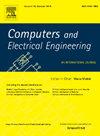电能质量干扰的智能评估:机器学习和深度学习解决方案的综合综述
IF 4
3区 计算机科学
Q1 COMPUTER SCIENCE, HARDWARE & ARCHITECTURE
引用次数: 0
摘要
随着全球对清洁能源和智能电网的关注加剧,检测由能源不稳定引起的电能质量扰动(PQDs)对于通过确保稳定可靠的电能质量实现可持续发展目标变得越来越重要。电能质量干扰,如电压下降或谐波,是电力供应的中断,可以影响从家用电器到工业机械的一切,使其检测和管理对稳定的电力系统至关重要。它们会对电网基础设施造成重大破坏,导致能源效率低下、发电和用电受限、设备故障和工业过程故障。人工智能(AI)的结合改变了PQD分类,在监测和管理电气系统方面取得了实质性进展。本文对现有文献进行了系统回顾,重点介绍了机器学习和深度学习技术在PQD检测中的集成。它分析了pqd检测和分类的高质量研究,并根据所采用的人工智能技术对它们进行了分类。此外,它强调了数字信号处理(DSP)技术在提取特征中的作用,并根据DSP和非DSP方法的结合进行了研究。一个案例研究展示了人工智能技术在现实世界中的实际应用和有效性,其中Bagged Trees分类器的测试准确率最高,达到96.6%。提供的见解旨在支持研究人员和从业人员在不断发展的电能质量评估领域中导航,最终提高PQD检测系统的可靠性和准确性。本文章由计算机程序翻译,如有差异,请以英文原文为准。
Intelligent assessment of power quality disturbances: A comprehensive review on machine learning and deep learning solutions
As the global focus on clean energy and smart grids intensifies, detecting power quality disturbances (PQDs), caused by energy instability, has become increasingly critical for achieving sustainable development goals by ensuring stable and reliable power quality. Power quality disturbances, such as voltage sags or harmonics, are disruptions in the electrical supply that can affect everything from household appliances to industrial machinery, making their detection and management essential for a stable power system. They can cause significant damage to power grid infrastructure, leading to energy inefficiency, restricted electricity generation and consumption, equipment malfunction, and industrial process failures. The incorporation of artificial intelligence (AI) has transformed PQD classification, providing substantial advancements in monitoring and managing electrical systems. This paper presents a systematic review of the existing literature, focusing on the integration of machine learning and deep learning techniques for PQD detection. It analyzes high-quality studies on PQDs detection and classification, categorizing them based on the AI techniques employed. Additionally, it emphasizes the role of digital signal processing (DSP) techniques in extracting features, with studies segregated based on the incorporation of DSP and non-DSP approaches. A case study demonstrates the practical application and effectiveness of AI techniques in real-world contexts, with the Bagged Trees classifier achieving the highest testing accuracy of 96.6 %. The insights provided aim to support researchers and practitioners in navigating the evolving landscape of power quality assessment, ultimately improving the reliability and accuracy of PQD detection systems.
求助全文
通过发布文献求助,成功后即可免费获取论文全文。
去求助
来源期刊

Computers & Electrical Engineering
工程技术-工程:电子与电气
CiteScore
9.20
自引率
7.00%
发文量
661
审稿时长
47 days
期刊介绍:
The impact of computers has nowhere been more revolutionary than in electrical engineering. The design, analysis, and operation of electrical and electronic systems are now dominated by computers, a transformation that has been motivated by the natural ease of interface between computers and electrical systems, and the promise of spectacular improvements in speed and efficiency.
Published since 1973, Computers & Electrical Engineering provides rapid publication of topical research into the integration of computer technology and computational techniques with electrical and electronic systems. The journal publishes papers featuring novel implementations of computers and computational techniques in areas like signal and image processing, high-performance computing, parallel processing, and communications. Special attention will be paid to papers describing innovative architectures, algorithms, and software tools.
 求助内容:
求助内容: 应助结果提醒方式:
应助结果提醒方式:


